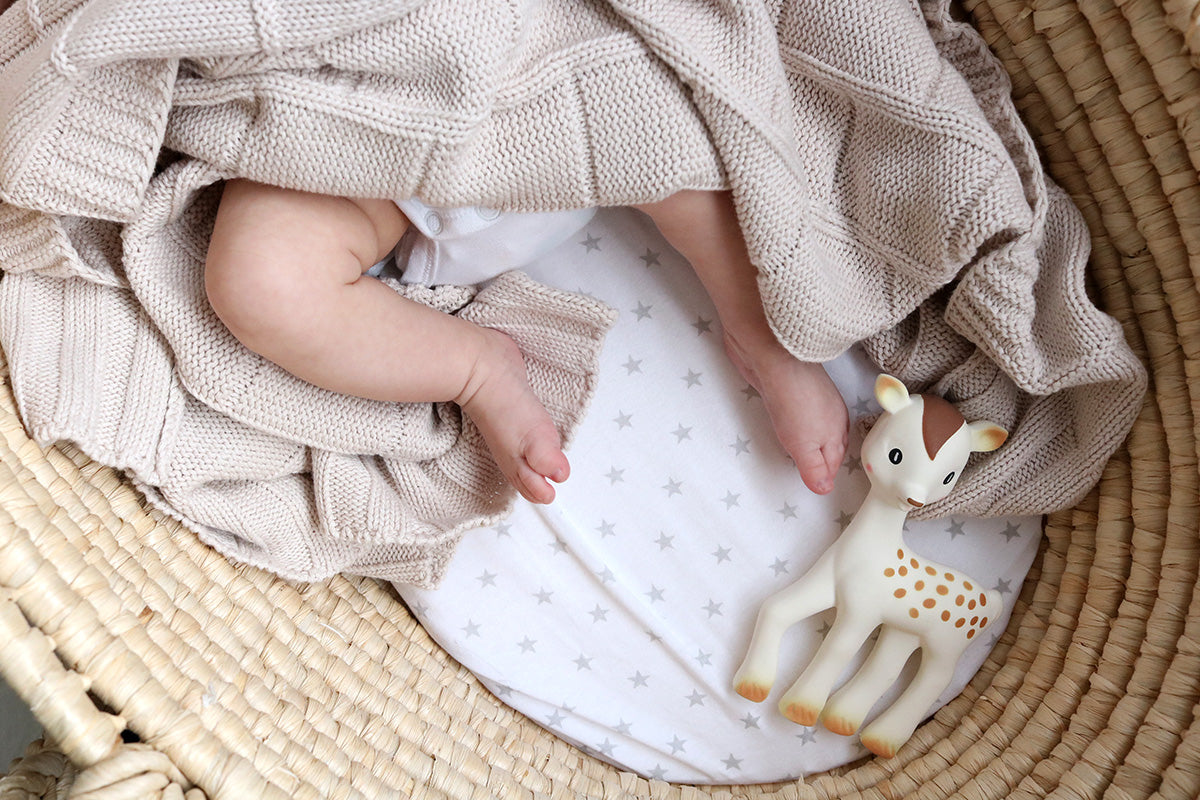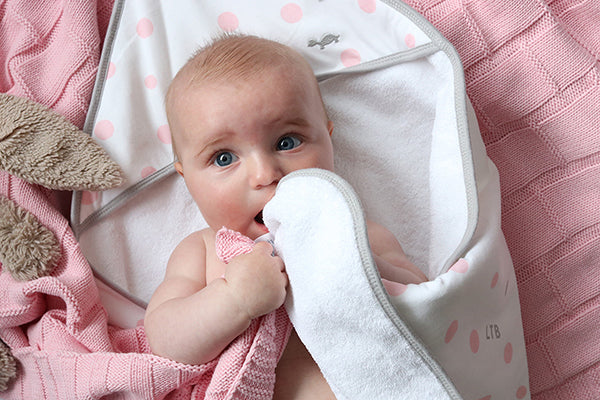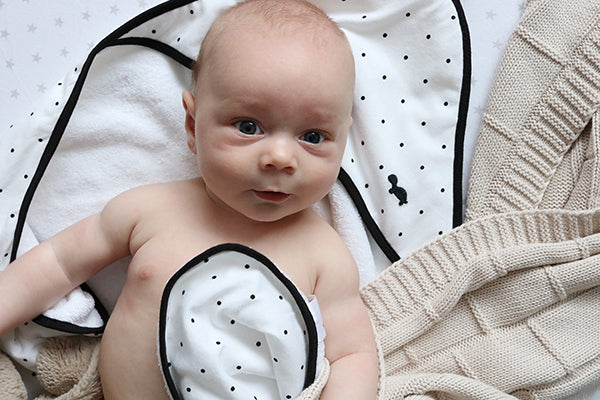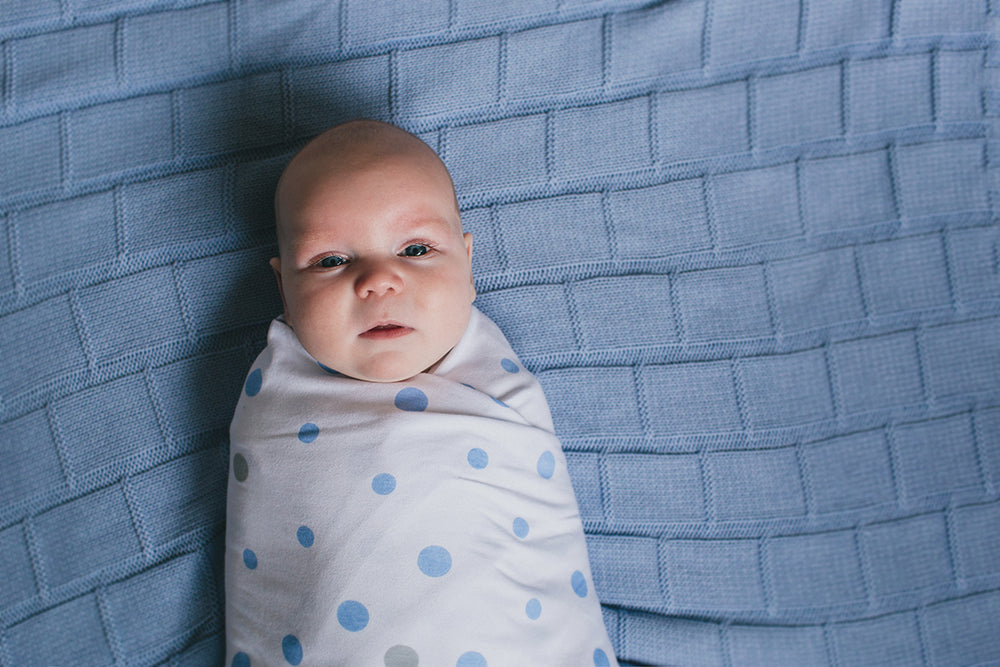
15 Ways To Help Your Baby Sleep By Pinky McKay
Check out these tips from the best-selling author and breastfeeding expert Pinky McKay.
15 Ways To Help Your Baby Sleep
By Pinky McKay
Just like us, babies are individuals – and this goes for sleep requirements too. It may help (or not, if you are suffering from sleep deprivation) to realise that in most infant sleep studies, ‘all night’ is defined as five hours. If you are thinking that even five hours uninterrupted sleep would be a dream come true, there are some gentle strategies you can try to help your baby, and you, to sleep better:
- Know the Signs – None of us like being kept awake when we are craving sleep, so rather than waiting until your baby is ‘past it’, help her relax into sleep as soon as she shows sleepy signs such as becoming quiet, staring, yawning, making ‘jerky’ movements, losing interest in people or toys and fussing. If you miss this window of opportunity, your baby is likely to become grumpy and find it more difficult to shut out stimulation and settle. Tip: For the first three months, at least, most babies need some help to settle. Consider, your newborn has a startle reflex and enters sleep through an active sleep stage. It can take around 20 minutes for your baby to enter deeper sleep. So if you are cuddling or rocking your baby to sleep, wait until her arm is floppy before trying to move her into her own sleep space.
- Introduce Bedtime Rituals – bedtime routines can become cues that help even tiny babies wind down and become conditioned to fall asleep. From the earliest days, give her a warm relaxation bath just before bedtime – this helps because one trigger for sleep is a slight drop in core body temperature, so after a bath you will have a ‘window’ of drowsiness where you can feed and help baby to sleep more easily. Tip: Wrap and cuddle baby dry in a warm towel, rather than laying her flat and dabbing all the crevices, so she isn’t upset by her startle reflex.
- A Magic Touch – Silent nights could be at your fingertips: Research from Miami University showed that infants and toddlers who were massaged daily for one month, for 15 minutes prior to bedtime, fell asleep more easily by the end of the study. To learn how to massage your baby, check out Pinky’s Beautiful Baby Massage DVD/Video. This is available as a streaming online video Tip: Most babies under three months will find a massage and a bath too stimulating, so either alternate a bath or a massage on different nights or massage at another time of day and bath in the evening. A massage earlier in the day when baby is calm, will encourage longer day sleeps and help your baby stay calmer so night sleeps are better
- Soothing Sounds – The calming, repetitive sounds of traditional lullabies recall the ‘womb music’ your baby heard before birth (your heartbeat, and fluids whooshing through the placenta). Baby music that incorporates elements such as the rhythm of the maternal heartbeat or ‘white noise’ has remarkable soothing effects, especially if played continuously through the night on a low volume. Of course you can sing to your baby and having a special sleepy song or perhaps a traditional lullaby that may be part of your family’s history (what did your mama sing to you?) will be a completely portable way to help your baby relax and feel secure. Tip: If you are feeling a bit anxious or stressed, it can help to hum rather than sing, as this will slow your breathing and help calm you so your baby doesn’t pick up on your anxiety about him falling asleep (or not).
- Rockabye Baby – The motion of a rocking chair or being ‘worn’ in a wrap or carrier as you walk will lull baby to sleep. So will gently bouncing on a fitball – hum as you rock. Or you could consider a special-purpose baby hammock – and as baby moves and arouses, her movements will start the hammock rocking.
- All Snuggled Up – The startle reflex, a primitive survival reflex that produces spontaneous, jerky movements, even in sleep, can be disturbing (literally). Provide a sense of security by swaddling your newborn – wrapping him in a stretch muslin wrap. Gradually unwrap and discard the wrap as this reflex disappears (at around three months) and baby starts to roll over.
- Check your Diet – Your baby is never allergic to your milk but sometimes foods passing through your milk can cause your baby to be wakeful or unsettled. For instance, caffeine can create a vicious circle: You drink coffee (or tea or cola) to give you a hit, baby gets a boost of stimulant through your milk and becomes restless. Newborns are particularly vulnerable to caffeine: A newborn may take up to ninety seven hours to get rid of caffeine so if you drink several cups over the day, the effects will be accumulative. Tip: If you suspect foods in your diet may be making baby unsettled, keep a food diary – jot down what you eat and times on one side of the page and your baby’s unsettled/wakeful times on the other. See if there is a connection and eliminate the suspect foods for a week. If you suspect dairy is a culprit, you will need to eliminate all dairy (milk, cheese, butter, yoghurt) for at least 2 weeks.
- Daytime Feeds – Tiny tummies need frequent refills but soon your baby will start sleeping at least one longer stretch between feeds. If your newborn baby sleeps more than three hours between feeds during the day, it is reasonable to gently unwrap him and offer a feed, then he might save his longer sleep for night -time. However, be patient if he is not ready to alter his pattern.
- Try a ‘Dream’ Feed – Whatever time your baby was last fed, gently offer a feed just before you go to bed yourself (hold him but don’t wake him, he will suck in his sleep) and, with luck, his longer sleep may coincide with yours. Tip: If you are breastfeeding, it’s important that this is a breastfeed or expressed breast milk, often you will be told that a bottle of formula will make your baby sleep longer. Actually, research shows that mothers who breastfeed at this feed get an average of 45 minutes more sleep overall than those who ‘top-up’ with formula. Also, by offering formula at this feed, you risk reducing your milk supply and unnecessarily exposing your baby to potential allergens.
- Teach her Day from Night – Teach baby the difference between night and day by keeping the lights low and attending to him quietly during night feeds. Save play and animated chatter for daytime. You can also encourage more day waking and night sleeping by ‘wearing’ your baby for periods during the day so s/he is stimulated by your body movements and rhythms. Wearing your baby outdoors for a daily walk will also be helpful. Remember though, that newborns can take up to twelve weeks to develop a consistent day/night pattern of waking and sleeping. This depends on neurological readiness, not only how you support your baby to develop this awareness.
- Do Not Disturb – Avoid waking baby during night feed times by changing the nappy either before or half way through a feed, not when baby is all drowsy and full. If baby is falling asleep during night feeds so only having a short feed, try changing the nappy half way through, then offering the other breast.
- Let him Suck up to the Boss – Falling asleep on the breast is one of the easiest ways for most babies to settle. This is due to hormones released while your baby feeds but if you are concerned about it becoming a habit, alternate feeding with other sleep cues. As baby grows, if sleeping at the breast seems to have become his favourite (and your easiest) way to get to sleep, you can make changes gradually with love when he is a bit older.
- Share Sleep – Research shows that mothers and babies who sleep together (within reach of each other, not necessarily in the same bed) share the same sleep cycles, so these mothers get more sleep overall. You can try a co-sleeping cot specially designed to attach to your bed so baby has his own safe space but is close to you. Wherever your baby sleeps it’s important to maintain a safe sleeping environment. If you choose to bed share check out safe sleep guidelines.
- A Little Bit of Mummy – It’s not exactly a substitute for you, but if you slip your own soft, unwashed tshirt over baby’s mattress (tucked in securely), she will be comforted by your familiar smell as she sleeps. Tip: Avoid ‘comfort toys’. These are unsafe in baby’s beds as they can be a potential suffocation hazard.
- Stop the Clock – Simply knowing how long you are awake can be enough to make you too tense to get back to sleep, or it may encourage you to rush your baby and make him feel anxious. If you see your baby’s waking as a genuine need, it could help you to enjoy this precious cuddle time: feel the softness of his skin, breathe in his delicious smell and snuggle!
If your baby is still awake — for more tips to help your baby (and you!) sleep, read Pinky’s best-selling book Sleeping Like a Baby.
Pinky McKay is Australia’s most recognised breastfeeding expert and gentle parenting advocate. She’s an Internationally Certified Lactation Consultant (IBCLC), mum of five (so she has had her fair share of sleepless nights) and best-selling baby-care author of Sleeping Like a Baby, 100 Ways to Calm the Crying and Parenting by Heart (Penguin Random House). See Pinky’ s books, baby massage DVD (this is available as a streaming download) and recordings here.





